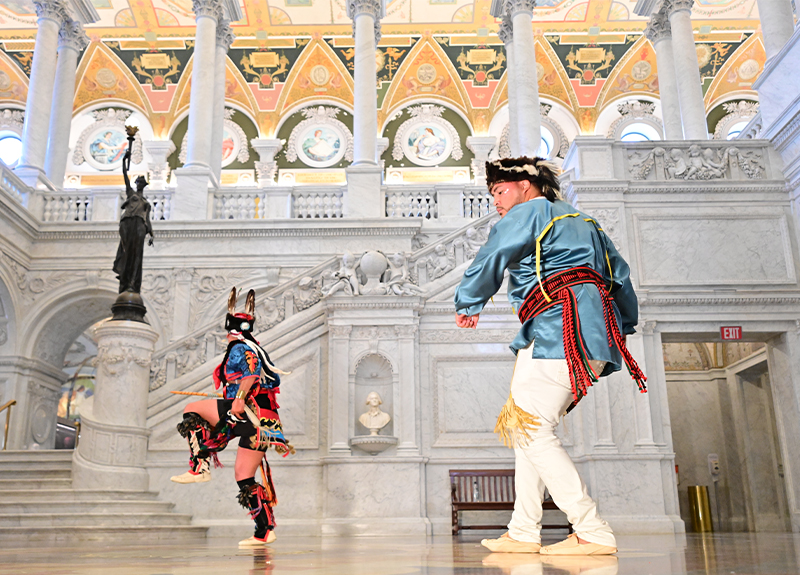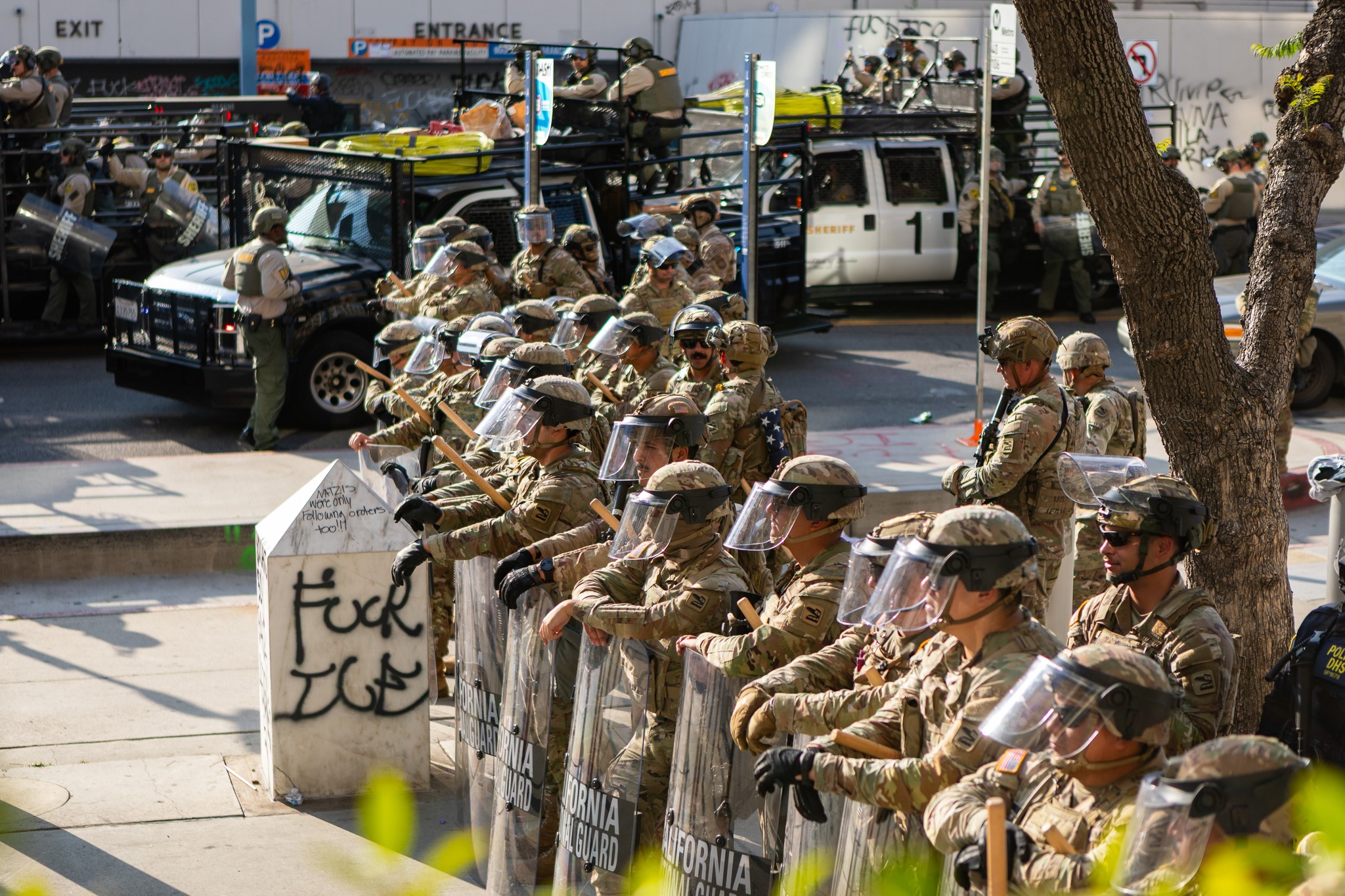-and-
This work began with the Federal Cylinder Project of the 1970s and 1980s in which AFC transferred thousands of turn-of-the-20th-century field recordings of Native American communities to reel-to-reel and cassette tape, then shared the tapes with communities.
Source: Library of Congress
by: Wendi Maloney
Images: Courtesy
Cover Caption: Devonne Harris and Kevin Harris II dance in the Library’s Great Hall. Photo: Johnathon Moulds.
Last summer, two men from Fulton Township, Michigan, walked onto the mosaic floor of Jefferson Building’s Great Hall. There, dressed in regalia of the Nottawaseppi Huron Band of the Potawatomi, brothers Devonne Harris and Kevin Harris II began to dance. A videographer recorded their performance for a project documenting their culture and heritage.
“I felt proud,” said Kevin Harris II. “I felt brave. I felt love, humility, pride and motivation.”
The Huron Band is one of 30 awardees to receive a Community Collections Grant between 2022 and 2024. Funded by the Mellon Foundation and administered by the American Folklife Center at the Library, the yearlong grants are helping communities preserve unique cultural practices for future generations.
The band’s project, funded in 2024, combines oral history interviews with videography, an approach JW Newson, the project’s executive director, describes as “ethnographic research shot in a documentary style.”

The Harrises and four other members of the Huron Band visited the Library last summer after learning about a rare Potawatomi-language sound recording preserved in AFC’s collections. Two young girls, thought to be residents of an Indian boarding school, sing on the recording, made in Lawrence, Kansas, by Willard Rhodes. Between 1939 and 1952, the Bureau of Indian Affairs and the Library sponsored his ethnographic field expeditions to Native American communities.
“To know that those little kids, whatever they were going through in the boarding-school era, were still actively doing traditional things .… It’s just a feeling of resiliency,” said Onyleen Zapata, the band’s historic preservation officer. Over the past three years, folklife specialists in AFC have offered training and technical support to grantees. The center is also archiving materials communities create and sharing completed projects on the Library’s website.
But communities themselves are carrying out the projects.
“Self-representation is a huge part of it,” said John Fenn, AFC’s research head. “We want to empower communities to self-represent in the archive through creating their own cultural documentation.”
AFC will soon release records from a project funded in 2022 and led by Tammy Greer, a member and scholar of the United Houma Nation.
Through oral history interviews, photos and video and audio recordings, she and her team documented tribal traditional arts, including basketmaking, wood carving, weaving and doll making.
“We are well aware that some of our traditional art ways are in jeopardy of going to sleep,” Greer said.
She is now transcribing interviews from the local idiom, which is influenced by Cajun. She is also providing metadata so that language describing the collection in Library records originates with the community itself.
“It’s painstaking work,” said Guha Shankar of the AFC, “but well worth it.”
“I always teach fieldworkers they are the first archivists,” he said. “They’re the eyes and ears. We would never get all of the nuances that define local customs and cultural expressions if not for the community supplying that metadata.”
Boots Lupenui, another 2022 grantee, documented historical songs of the Kohala region of Hawaii. A native Hawaiian, he interviewed composers or their descendants to uncover stories behind the songs and then recorded several of them.

“We are trying to preserve these heirloom songs, these snapshots of our history, culture and way of life before the last remaining memories of them disappear forever,” Lupenui said. He performed in the Library’s storied Coolidge Auditorium in April to celebrate the launch of his collection online.
Other Community Collections Grants are documenting artistic creations of the Comanche Nation of Oklahoma; stories of Baltimore Lumbee elders; and traditional methods used by the Nuwä community of California to prepare plants for food and medicine.
All of the projects grow out of AFC’s decades-long tradition of collaborating — with Native communities, agencies such as the Smithsonian Institution and groups like the National Breath of Life Archival Institute for Indigenous Languages — to preserve and maintain Native cultural and language traditions.
This work began with the Federal Cylinder Project of the 1970s and 1980s in which AFC transferred thousands of turn-of-the-20th-century field recordings of Native American communities to reel-to-reel and cassette tape, then shared the tapes with communities.
More recently, AFC has worked with partners to make numerous digitized holdings — 1960s recordings of Zuni tribal elders, for example, and photos and recordings from the Rhodes collection — available to communities to support revitalization of ancestral languages and cultural practices.
“Doing this work is a process of continuous improvement,” AFC director Nicole Saylor said. “I am grateful for our collaborations with communities to ensure their voices and perspectives are reflected in the collections we steward.”





